The week at a glance
- Probable Chinese Pond Heron in Kent
- Yellow-rumped Warbler still in Durham
- American Coot remains in Highland
- Penduline Tits in Kent and Somerset
- Olive-backed Pipit in Suffolk
- Red-flanked Bluetail lingers in Gloucestershire
While weather conditions were still temperamental, it was perhaps overall a slightly more comfortable week to be out in the field and enjoying what was on offer. Although there was radio silence on the Slaty-backed Gull seen in Galway City last week, there were plenty of other quality birds to catch up with, not least the heron frequenting the neighbourhood of Saltwood (Kent) which was still there on 18th. The consensus on the bird began to lean quite strongly towards it being a Chinese Pond Heron, with signs of maroon-coloured feathering appearing on the head as well as the breast pattern pointing towards this species; agreement on the bird's provenance will no doubt prove more of a challenge to settle, though, with little known about the popularity of Chinese Pond Heron in private collections, despite there apparently being very few, if any, held in European zoos and parks. It was certainly worth giving the bird a look and many have done so, with an early start offering the best chance of seeing it before it spent most of the day moving around private gardens.
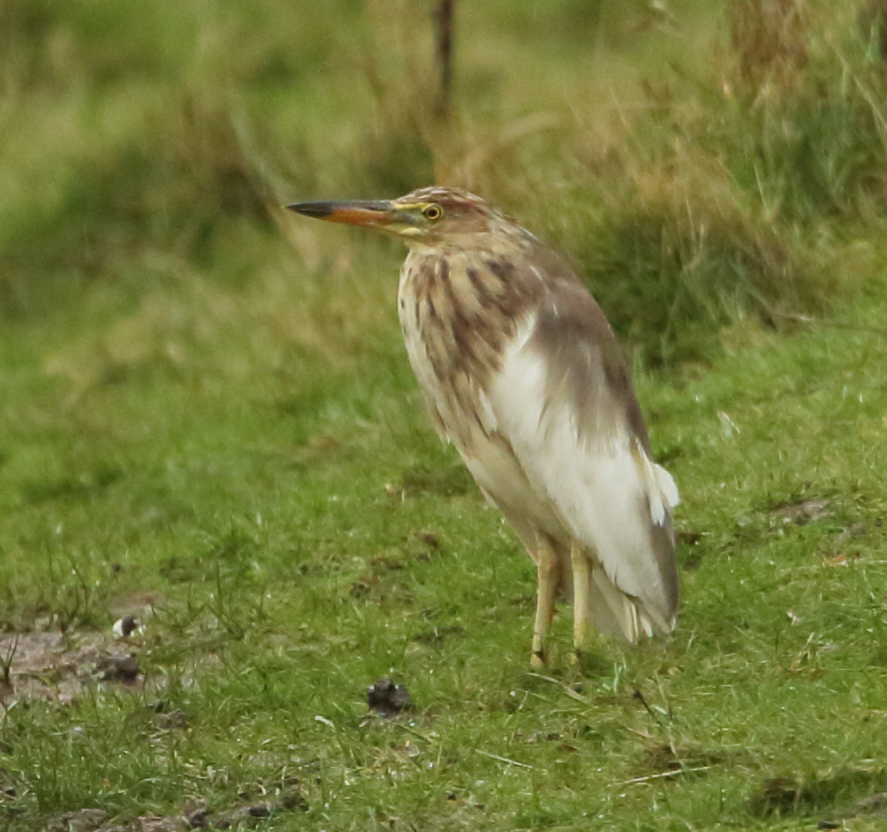
Chinese Pond Heron, Hythe, Kent (Photo: Kevin Du Rose)
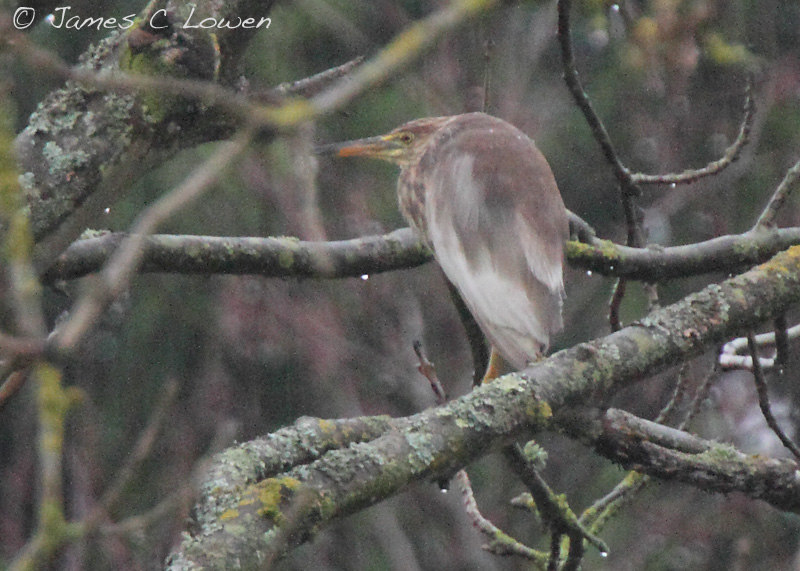
Chinese Pond Heron, Hythe, Kent (Photo: James Lowen)
Anyone with a desire to see Yellow-rumped Warbler shouldn't have had too much trouble, as the bird at High Shincliffe (Durham) reliably visited the food put out for it up to 16th. Unfortunately, it couldn't be found subsequently but local birders and residents must be applauded for allowing so many people the opportunity to see such an accommodating Nearctic passerine in Britain.
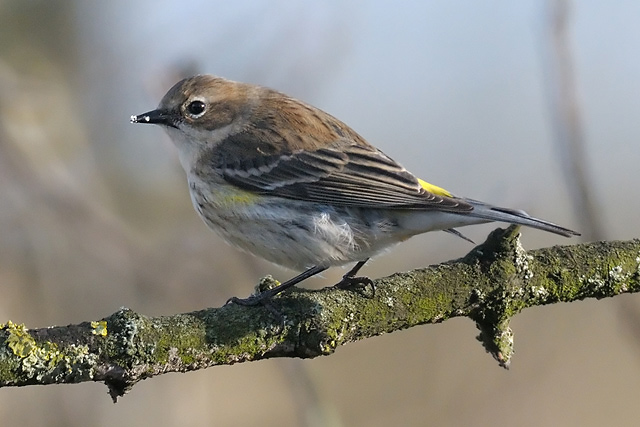
Yellow-rumped Warbler, High Shincliffe, Durham (Photo: Ian Curran)
A first-winter Laughing Gull at Marazion beach (Cornwall) on 17th, and still present on 18th, was among the week's notable finds, having been a relatively difficult gull to catch up with on the British mainland since the 2005/2006 influx. The first-winter at Ballycotton Pier (Cork) remained to at least 17th. At least as gripping for gull enthusiasts was a belting first-winter American Herring Gull photographed in Campbeltown harbour (Argyll), though it was not seen again. There remained plenty of other gulls on offer, including the adult Franklin's Gull still on Canna (Highland) to 16th. Adult Ross's Gulls resurfaced at Poolbeg (Dublin) and Kinsale Marsh (Cork) on 18th and the first-winter was at Aberavon (Glamorgan) until 16th when it flew strongly into Swansea Bay. In total 29 Ring-billed Gulls were present over the review period, with new birds including adults at Bantry (Cork), Belmullet (Mayo) on 18th, Dundalk (Louth) on 13th and on The Mullet on 15th, as well as two second-winters in Bantry town centre (Cork) on 16th. A Sabine's Gull at Bowness-on-Solway (Cumbria) on 13th was the first reported in the country for over two weeks. The Bonaparte's Gull in residence around Dawlish Warren was there to at least 16th. A good number of Kumlien's Gulls were still scattered around, with eight at Killybegs (Donegal) on 15th being the highest tally, while an utterly astounding count of around 40 Glaucous Gulls emerged from Belderra (Mayo) on 13th. As for Iceland Gulls, nine was the highest number reported and this was at Killybegs (Donegal) on 15th. The first-winter Forster's Tern was still at Elly Bay (Mayo) to 17th at least and the adult remained at Nimmo's Pier (Galway) to at least 16th.
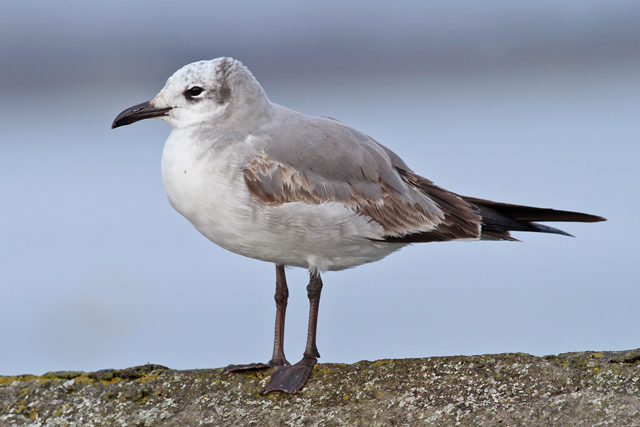
Laughing Gull, Ballycotton, Cork (Photo: Richard Bonser)
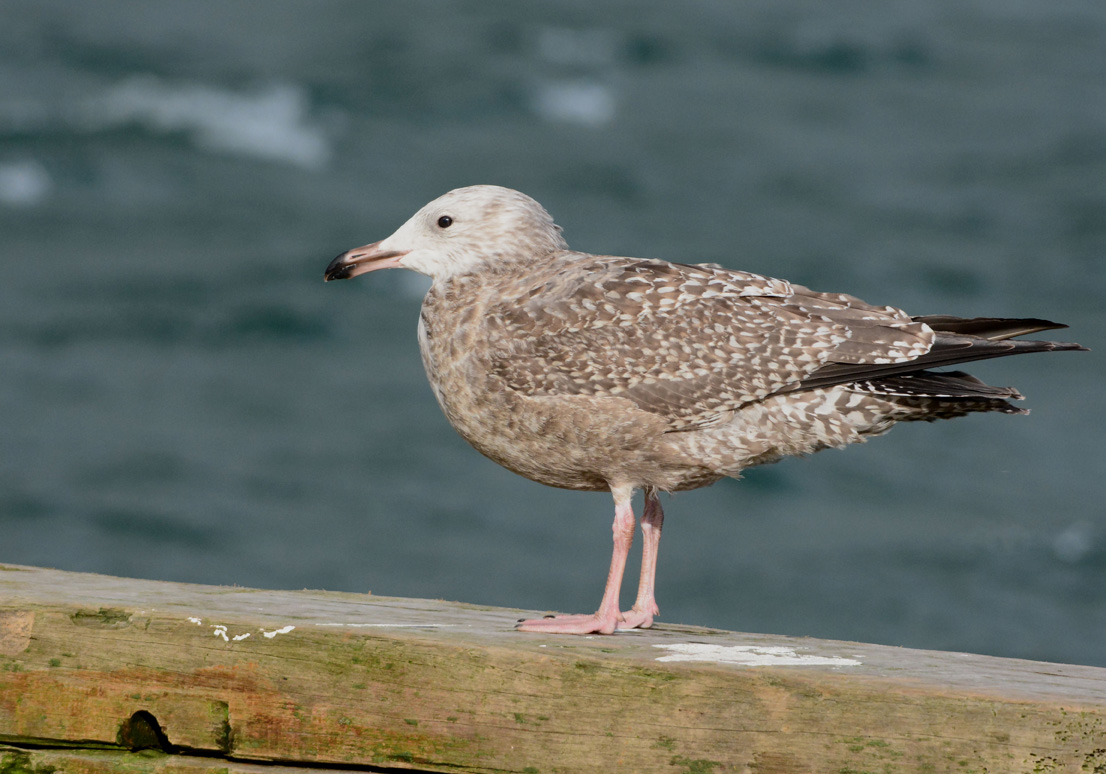
American Herring Gull, Campbeltown, Argyll (Photo: Eddie Maguire)

Ross's Gull, Port Talbot, Glamorgan (Photo: Ashley Howe)

Franklin's Gull, Canna, Highland (Photo: Martin Benson)

Ring-billed Gull, Crosby, Lancashire (Photo: Pete kinsella)
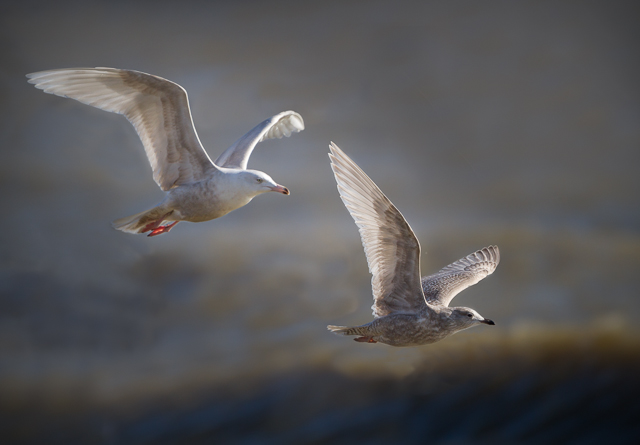
Kumlien's Gull, Littlehampton, West Sussex (Photo: Bill Brooks)
The American Coot showed no obvious desire to leave, still being visible at the east end of Loch Flemington (Highland) on 18th. Scotland also continued to boast the Pied-billed Grebe on Loch Scaraidh on North Uist (Outer Hebrides) to at least 16th and the drake Black Duck on Loch Sunart, Strontian (Highland), to 18th. Three White-billed Divers were found in Scapa Flow (Orkney) on 17th, and elsewhere on Orkney another was still off St Margaret's Hope, South Ronaldsay; on the same day one was off Sound Gruney (Shetland). On 16th, a report of a probable Pacific Diver off Culzean Castle (Ayrshire) came through but the bird was apparently seen to fly off and nothing more has come of it thus far. The only Red-breasted Goose reported was the one of questionable origin in Dumfries and Galloway, still there on 17th. The same two Snow Geese were near Tayinloan and later over Rhunahaorine Point (Argyll) on 18th, while the two were still at Loch of Strathbeg RSPB (Aberdeenshire) on 17th; a blue morph was at Evie, Mainland (Shetland), on 16th while the Braehead (Clyde) duo remained to 16th at least. Black Brants were at Thornham (Norfolk) on 18th and Rampside (Cumbria) on 14th. A Todd's Canada Goose was at Stewarton (Argyll) on 18th and another was at Cross Lough, The Mullet (Mayo), on 17th. A Richardson's Canada Goose was still present on Islay (Argyll) on 17th, and one seen on the island the following day was considered a different individual.
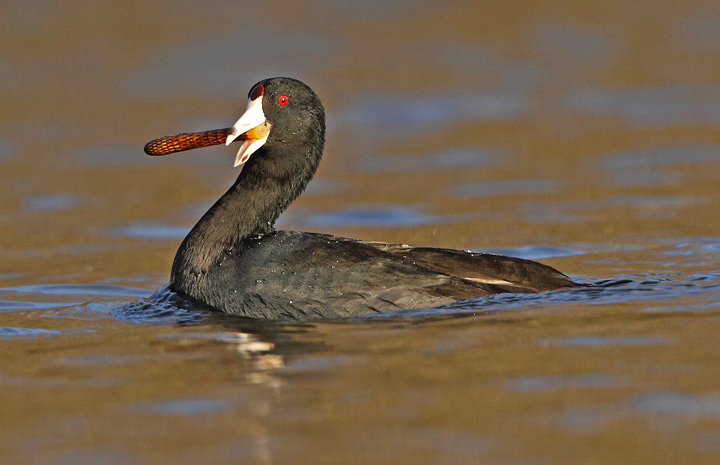
American Coot, Loch Flemington, Highland (Photo: John Dickenson)
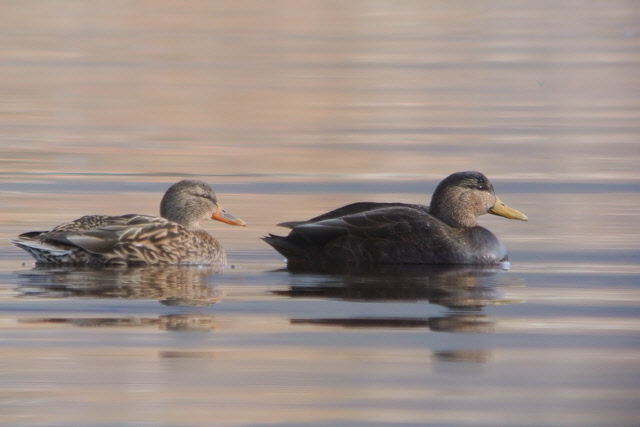
Black Duck, Strontian, Highland (Photo: Ian Fulton)
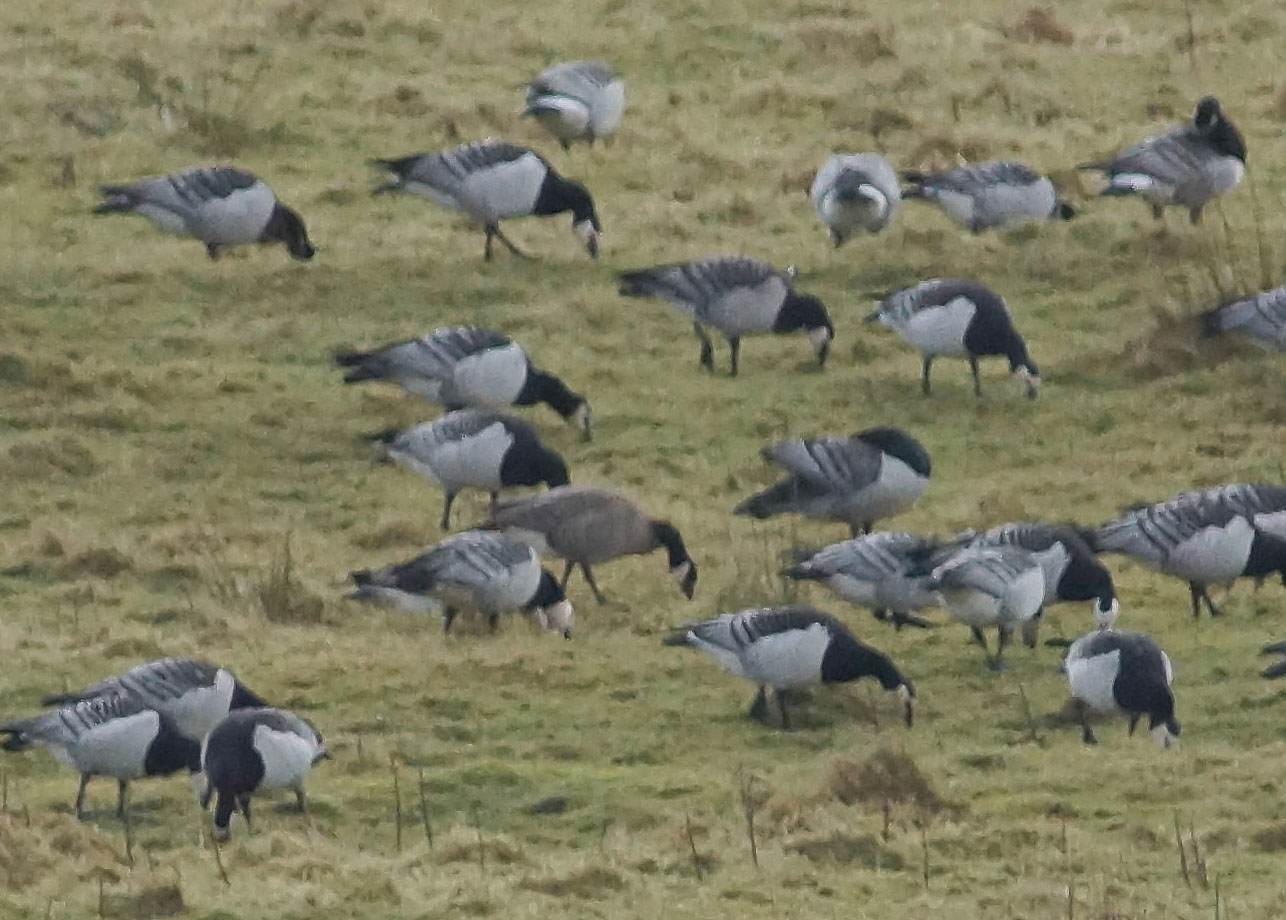
Richardson's Canada Goose, Keills, Islay, Argyll (Photo: Steve Percival)
Other wildfowl included a new pair of Lesser Scaup on 16th at Angliham (Galway) and a new female on 18th at Dunfanaghy New Lake (Donegal), where a pair of Ring-necked Ducks was found at the same time. The drake Lesser Scaup at Tittesworth Reservoir (Staffordshire) remained to at least 16th, as did the Cosmeston Lakes CP (Glamorgan) drake; the Dozmary Pool (Cornwall) individual was present to at least 17th. The female King Eider was seen again at Ruddon's Point (Fife) on 18th. A female at Cahermore (Cork) was also present to 18th and the pair continued at Bluemill Sound (Shetland) to at least 17th, when females were still at Blacksod (Mayo), and Fidra (Lothian). The drake Blue-winged Teal first found at Threave (Dumfries and Galloway) in November 2010 returned to the River Dee there on 15th. Seven Green-winged Teal remained this week and a new drake was at Broadwood Flash (Ayrshire). Drake American Wigeon were still in situ at Lough Neagh (Armagh) on 16th and Culdaff (Donegal) on 15th. Ring-necked Ducks staying into the review period numbered six, in addition to the two new birds in Co Donegal. A staggering eight Surf Scoters, seven of which were drakes, were off Pensarn (Conwy) on 16th, while lingering individuals were in Mount's Bay (Cornwall), off Ower (Dorset) and Musselburgh (Lothian).

King Eider, Bluemull Sound, Shetland (Photo: Brydon Thomason)
A Snowy Owl was at Exnaboe (Shetland) on 14th before flying north. A Rough-legged Buzzard over Leith Hill (Surrey) was an excellent county record, while regular birds were still at Haddiscoe Marshes and Burnham Overy (Norfolk) on 18th.
The Cattle Egret continued to linger at Hillsborough (Down), and one was seen again roosting at Calvert Lakes (Bucks) on 18th. Plenty of Glossy Ibises and Great White Egrets were still on offer throughout the week. Strong winds on 15th blew a Leach's Storm-petrel into Portland Harbour (Dorset), representing an excellent record for this time of year. In the neighbouring county of Hampshire, the Long-billed Dowitcher returned to Pennington Marshes on 12th and the Lesser Yellowlegs was still at Lepe CP on 13th, but its fidelity to the pools there might have ended as the only successive news was negative, on 16th. A small handful of Grey Phalaropes were seen this week, including the bird off Stag Rocks, Bamburgh (Northumberland), which was present on 17th; one off Alnmouth (Northumberland) on 15th might have been the same bird exploring the coast and another was off Spurn (East Yorkshire) on 13th. The identification of the Actitis sandpiper in the Port of Felixstowe was resolved on 14th when it was proved to be a Common Sandpiper.
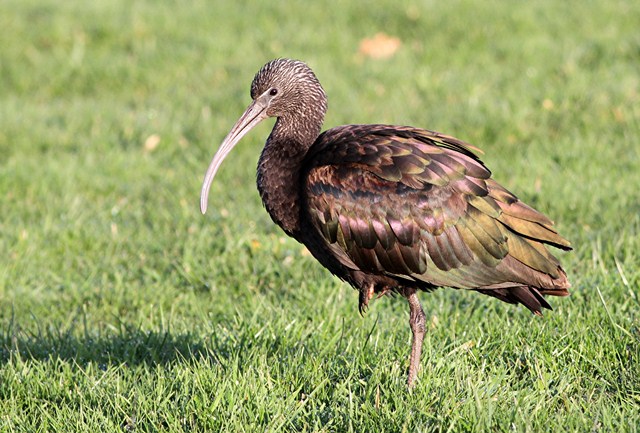
Glossy Ibis, Chapel St. Leonards, Lincolnshire (Photo: Paul Neale)

Great White Egret, Pickerings Pasture, Cheshire (Photo: Rob Cockbain)
The least anticipated passerine of the week was an Olive-backed Pipit seen in gardens in Leiston (Suffolk) on 15th, but not subsequently. The Red-flanked Bluetail was still to be reliably found near Marshfield (Gloucestershire) to 18th at least, and a small number of Penduline Tits appeared this week, including one heard at Shapwick Heath NNR (Somerset) on 16th. Two appeared at Dungeness RSPB (Kent) on 15th and these proved more obliging than the Somerset bird, with one (bearing a ring) showing there the next day and both birds giving themselves up once more on 17th. These birds will be much appreciated as it nears the end of what has been a poorer than average winter for the species based on recent years; perhaps more will be found in coming weeks. Cheshire's Buff-bellied Pipit at Burton Marsh was last reported on 15th but could easily still be in the area. A Richard's Pipit was at Coverack (Cornwall) on 16th and Gramborough Hill (Norfolk) was graced by the continued presence of the bird wintering in the area to at least 17th. St. Mary's (Scilly) held onto its Serin to at least 17th although there were no reported sightings of the Rose-coloured Starling on the island this week.

Red-flanked Bluetail, Marshfield, Gloucestershire (Photo: Ian Curran)

Red-flanked Bluetail, Marshfield, Gloucestershire (Photo: Katie Horrocks)

Penduline Tit, Dungeness RSPB, Kent (Photo: Martin Casemore)
There continued to be a decent selection of wintering warblers there for the taking, with the Hume's Leaf Warbler still at the trials bike track at Hams Hall (Warwickshire) on 18th and both Kent birds, at Dungeness NNR and Ramsgate Cemetery, were still present and correct on 16th. The Yellow-browed Warbler in Uffmoor Wood (Worcestershire) remained to 18th and the bird at Topsham (Devon) was seen again on 18th. The Pallas's Warbler at Shorncliffe Barracks (Kent) was still there on 17th. Another Pallas's Warbler was unearthed at Stroud, near Petersfield (Hampshire), on 15th but couldn't be located the following day.
Two-barred Crossbills could still be seen at Broomhead Reservoir (South Yorkshire), with at least a male there on 18th and seven there the previous day. Also to 18th were at least three at Brierley (Gloucestershire) and three at Wyre Forest (Shropshire). Two, possibly four, were discovered at Nercwys Mountain (Clwyd) on 17th. To at least 16th two males were at Brierley (Gloucestershire) on the same date as the sporadically appearing bird at Broughton (Lincolnshire) was last reported. The female at Leith Hill (Surrey), not seen since early December, flew over the site on 16th. Although Parrot Crossbills are generally less prolific in number and distribution now that several months have passed since the main arrival, 15 were still at Holt (Norfolk) on 17th (with 16 there on 14th) and one was still at Spinks Lodge (Suffolk) on 16th.
Photo of the Week

Crossbill, West Stow CP, Suffolk (Photo: Iain H. Leach)
Photographer Iain H Leach has a superb collection of over 13,000 British bird and wildlife photos on his website. Over the last couple of years, he has shared 120 of his images through BirdGuides, several of which have been selected as Notables. This week, Iain followed in the footsteps of the many photographers who have visited West Stow CP in Suffolk to photograph the Crossbills at the drinking pool there. This location has provided unparalleled opportunities to photograph these great-looking birds at close range and we've featured a number of the resulting images as Notables right through the winter. However, just when we'd concluded this subject had been exhausted, Iain managed to turn in something very different. His perfectly-timed action shot of a well-lit male bird bursting into flight really stands out from the crowd. Dynamic pose and low shooting angle give the shot impact, but the continuous arc of water connecting the bird to the pool really sets it apart. In such small birds, this action takes place in milliseconds: capturing it earns Iain his first Photo of the Week. For more images, visit Iain's website at www.iainleachphotography.com.
Other notable images

White-billed Diver, Sandside Bay, Highland (Photo: Peter Stronach)

Wren, Wayoh Reservoir, Lancashire (Photo: John Barlow)

Red-flanked Bluetail, Marshfield, Gloucestershire (Photo: Ian Curran)

Pintail, Mistley, Essex (Photo: Carl Wright)

Ptarmigan, Glenshee Ski Centre, Aberdeenshire (Photo: John Anderson)

Desert Wheatear, Morocco (Photo: Mick Southcott)
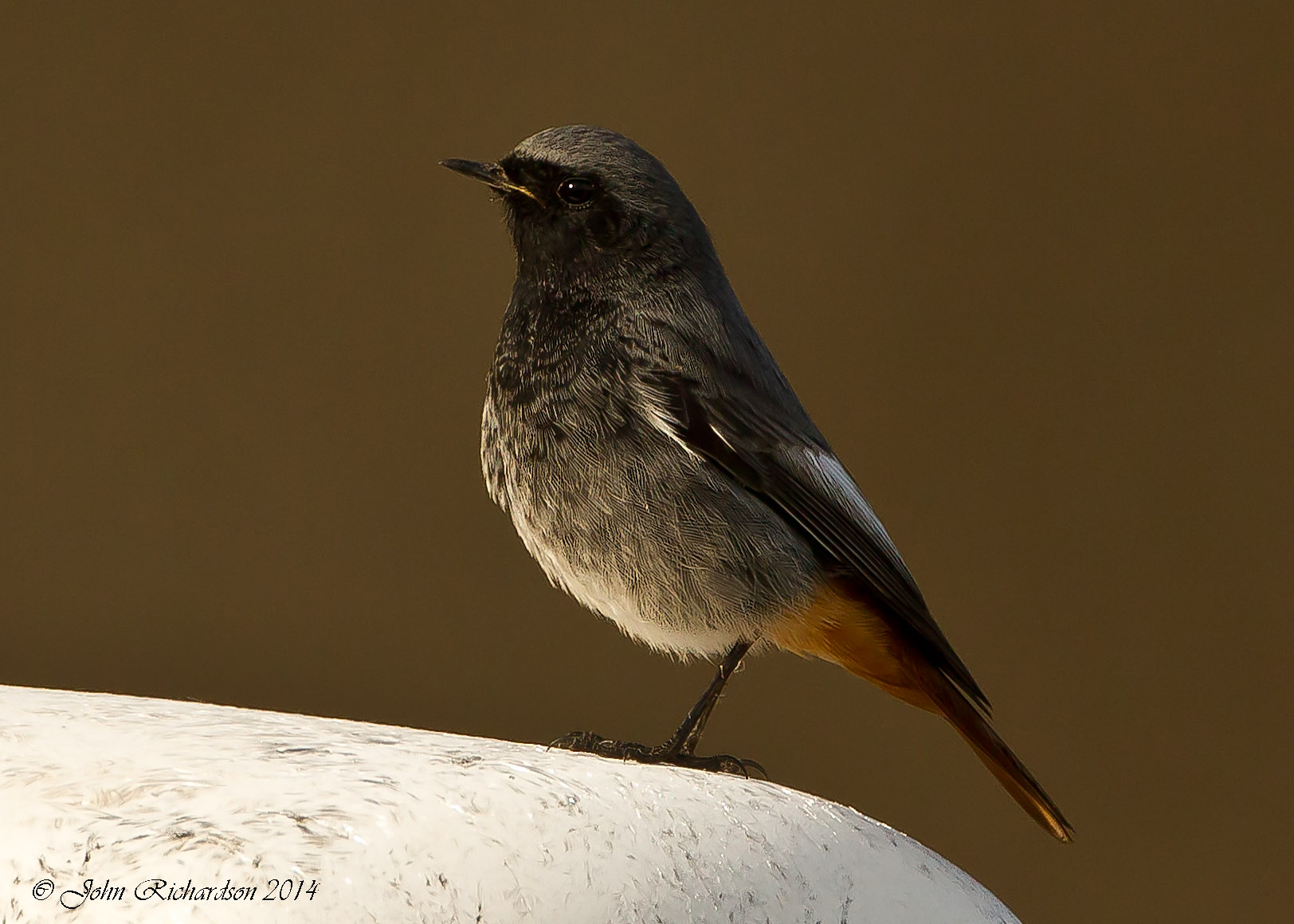
Black Redstart, Sizewell, Suffolk (Photo: John Richardson)

Waxwing, Blackburn, Lancashire (Photo: Gordon Speirs)

Saddle-billed Stork, Kenya (Photo: John Fielding)

Sparrowhawk, Llandrindod Wells, Powys (Photo: Kev Joynes)

Great Crested Grebe, Oxford Island NNR, Armagh (Photo: Noel Austin)

